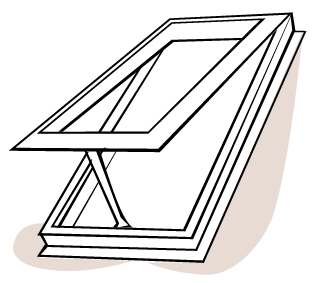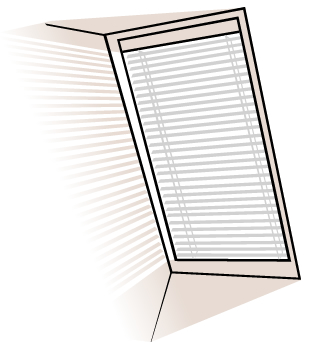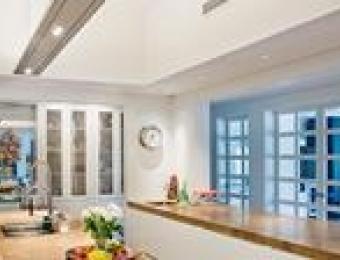
If you’re looking to include daylighting in your home, it’s tough to go past a skylight. A skylight is essentially a window in your roof, which admits light, and which can also allow ventilation. Ventilated versions can be remote controlled or manually controlled, depending on your preference and budget.
Advantages of skylights over windows
The major advantage of skylights over regular windows is that they directly face the sky, and are rarely shaded by other objects or obstacles. Windows on walls typically have indirect access to sunlight, much of which is reflected from other buildings, trees, fences and the ground. Skylights typically allow much more light in. Likewise, they disperse this light it more evenly over a wider space.
Because of the excellent, uniform light they allow into a room, skylights are particularly ideal for bathrooms and kitchens. These rooms often only have limited access to window light, and the strong light afforded by a skylight works well in these settings. Skylights also afford far more privacy than conventional windows in bathrooms.
Skylight types
Skylights are typically made of either glass or acrylic (or a similar material), and come in a variety of different types. Acrylic skylights are typically cheaper than their glass equivalents, and are lighter and easier to install. While they generally allow a similar amount of light into your home, acrylic skylights are also known, over time, to react to the elements and may discolour as the years go by. They will also scratch and warp far more easily than glass will. Tempered glass or safety glass is often preferred for skylights due to the added durability and strength it provides. Likewise, low-e glass is a good option for skylights or roof windows due to the fact that it cuts glare and reduces heat transmission.
Skylights can either be transparent or have a 'frosted' glazing. While the decision between the two types is largely an aesthetic one, a frosted glazing generally allows a more diffuse (albeit less intense) light in, and a transparent skylight, if not glazed appropriately, can allow more heat loss during cooler months and may generate more heat in warmer months.
Depending on the shape of the room and the application, you may even opt for a roof window instead of a conventional skylight. Some buildings even feature rooms with glass roofs too, although these normally require large sheets of low-e safety glass.
Dome skylights and shapes
Some people prefer to have dome-shaped skylights over the conventional flat-pane style skylight windows. The decision to use domed skylights is largely aesthetic, with these skylights performing much the same job as their flat counterparts. Domed skylights are often not as heavy as regular skylights, and although they are available in glass versions, are more commonly acrylic due to the fact that glass versions are more complicated to manufacture.

UV and glazing
Because skylights allow so much daylight in, it's important to consider glazing or window film to prevent harmful UV rays from entering your home – this is especially the case for skylights in commonly used areas. UV rays, as well as increasing the risk of skin cancer, can also cause your furniture, carpets and upholstery to fade or degrade.
Skylight considerations
If you are planning to build a skylight, here are a few things to consider:
- The average size of a skylight covers 4-8% of floor area.
- During summer, skylights with transparent glazing will generate a lot of excess heat so plan accordingly.
- Avoid vented units as these can cause drafts.
- Double-glazed units should be used wherever possible.
- Ensure skylights are installed correctly to avoid any problems associated with leaking. Also try to avoid single paned skylights to avoid problems with condensation.
Roof lanterns
A variation of the skylight is the roof lantern. These are large, elaborate multi-paned glass structures that sit on top of a flat roof in order to provide natural light into the room below. They can offer more light than a skylight and further reduce energy bills by lowering your reliance on artificial light. As with skylights, glazing and film choices should be carefully considered.





